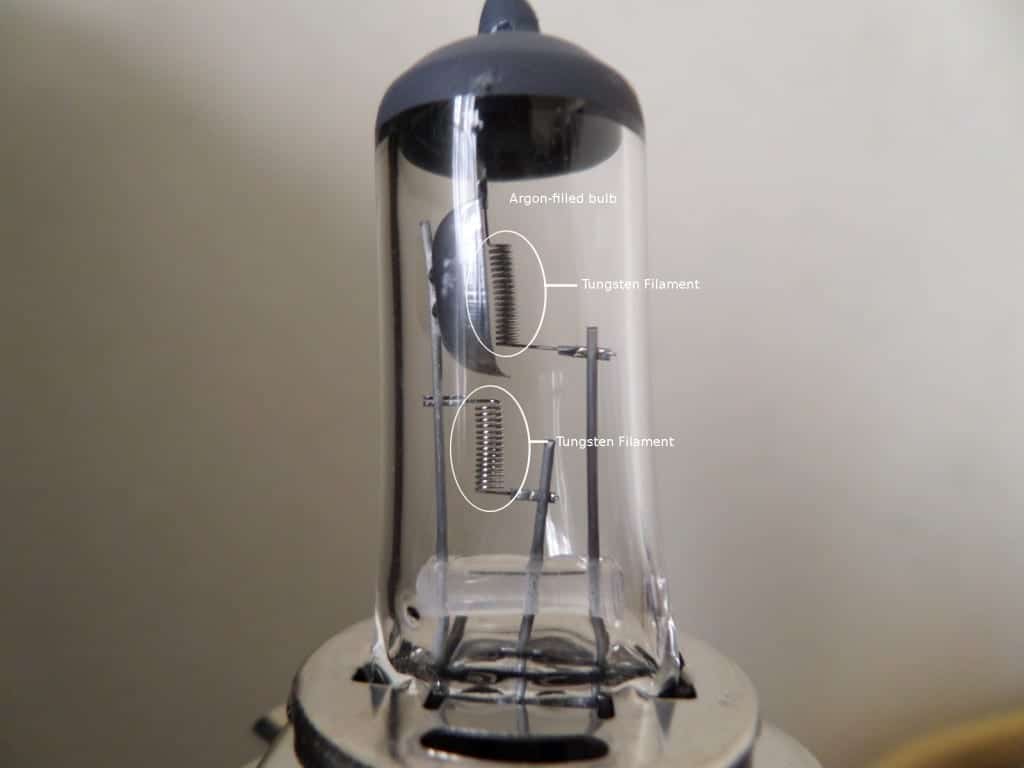How It Works: Incandescent (and Halogen) Light Bulbs
Incandescent light bulbs were the first, and simplest light bulbs to make it into the mainstream lighting market. They (as well as the common fluorescent light bulbs) are now being phased out by improving LED technology. However, they are still commonly used in ovens, automotive headlamps and tail lamps, torches, among other applications.
Electric current is supplied to the filaments (the coils of tungsten wire labelled above), causing them to become extremely hot. The heat generated by the electrical resistance in the filament causes it to glow. Generally, if any piece of metal becomes hot enough, it will glow. This phenomenon is called incandescence.

Image Credit: Nicholas Brown / Kompulsa.
How automotive headlight bulbs work: Automotive headlamp bulbs are unusual because they have two filaments (as shown above), but they operate on the same basic concept that all incandescent light bulbs do. The only difference between this and other bulbs is that the others usually have only one filament. Automotive headlamp bulbs have one filament for the low beam, switching to high beams turns both of them on.
Incandescent bulbs are filled with argon, as the oxygen in air would oxidize (destroy) the tungsten filament. This is why incandescent bulbs can’t work after they are broken.
How halogen bulbs work: Halogen bulbs operate the same way that incandescent light bulbs do, except they are filled with halogen gas instead of argon. Halogen gas enables incandescent bulbs to last longer than traditional argon-filled bulbs.
Halogen bulbs are incandescent.
That’s all there is to it!




